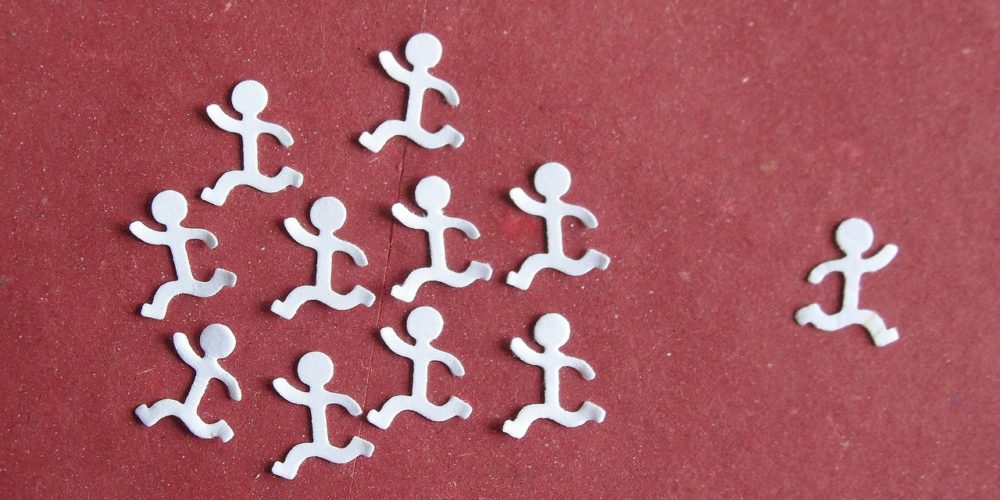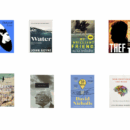Lost in a sea of sameness

When I was young, cars all looked different. The first car I ever drove was a Datsun 120Y—my mother’s—and it had a cutely weird boxy shape. It could not be mistaken for any other car. Similar Japanese makes—Toyota, Honda, Mazda—all had distinctive shapes and styling.
In those days, a Peugeot looked distinctively like a Peugeot; a Mercedes could be spotted from a mile away; a Volvo could not be mistaken for any other car; a Citroën was its own thing; and a Jaguar was distinction epitomized. Their designers celebrated being different.
What on earth happened? Look at new cars today, and see the sea of sameness that surrounds us. After a couple of decades of copying and mimicry, bland conformity rules the roost. Every mainstream model seems to be trying to look like every other mainstream model.
Walking through a suburban street in London in my travels last year, I passed by a parked mid-sized SUV. It looked a little dull, a little meh. I happened to notice the badge, and was astonished to see that it was an MG. An MG—that beautiful little roadster, reduced to suburban conformity? And lo and behold, down the street I walked past near-identical Honda, Hyundai, and Jaguar SUV models—and looking at them side on, I was unable to name the makes.
Alex Murrell agrees. He does strategy at a digital marketing agency, and he wrote a hard-hitting piece recently that called our current epoch “The Age of Average.” He showed a photo of 25 mid-sized SUV makes side-by-side. They all looked painfully similar.
This problem is not confined to cars. Mr Murrell points out that most recently kitted out Airbnb apartments look insipidly familiar; most modern city centres have the same array of glassy skyscrapers; and there is a particular “Instagram face” that social media influencers are driving young women towards. In publishing, once there was a bestselling self-help book with a four-letter swear-word in the title, a whole bunch of imitators using the same word were soon on the shelves.
In my observation, businesses and business leaders are also notable mostly for their similarities, not their differences. Most of the players in an industry offer the exact same products; their offices are furnished virtually identically; they jive in the same jargon and patter in the same patois in their boardrooms; they think the same thoughts; their so-called strategies are interchangeable.
This is so dispiriting. Instead of revelling in difference, we are sinking into sameness. Why do we do it? One reason is that humans are natural mimics—we look around and learn from others, and eventually this drives us into uniformity. It also happens because designers and manufacturers who are constrained by the need for short-term hits inevitably play safe—they go with what sells easily, not what stands out.
Allow me to rail against this tendency this Sunday. Yes, efficiency and uniformity are comfortable, but why do we just want to be comfortable? Why do we—parents, teachers, leaders—persist in telling everyone to look and sound and be the same? That cloak of sameness is not a comfortable fit—it is a straitjacket.
As a strategist, I have to tell you that the minute you take everyone down the path of sameness, you are striving for only one thing: mediocrity. Think about it this way: the thing that’s being copied, who came up with it? There was an original mind, individual or collective, that went for it—that look, that style, that process, that idea—and when it succeeded, a huge crowd of copiers followed. The originator set the trend and the standard; the mimics lacked the guts and nous to be original, so they just…copied. Who has the real achievement?
Yes, humanity transmits its best ideas, and humanity adopts at speed and at scale. But is that where true success sits? Rather than lead people into bland conformity, a thoughtful leader rails for distinction.
If you’re a CEO, push your people towards difference. Make them highlight what’s special and unique in your offerings, not just what benchmarks well. This is not to seek difference for its own sake, mind, but a meaningful divergence from the crowd. What makes you stand out with customers? What makes your employee experience different from everything else out there? If your customer encountered five product experiences in a day, would yours be the one that stood out—or the one that was forgotten in the crowd of clones?
If you’re the leader of difference, you’d better be the one who embraces diversity of thought and encourages debate and dissent. If you’re the one who encourages everyone to look the same and do what’s safe, then you will win the prize for passibility.
For our children, too, an age of automated uniformity looms. Are you raising them to acquire the skills that machines will soon be displaying, or are you encouraging them to be creative and caring, quirky and empathetic—in effect, learning all the things that bots won’t be able to do?
Remember this: if everyone’s zigging, they are following someone who zagged.
(Sunday Nation, 4 June 2023)

Buy Sunny Bindra's new book
The X in CX
here »
Popular Posts
- Make this your year of being boringJanuary 4, 2026
- My books of the yearDecember 14, 2025
- Confessions of an explaining personDecember 7, 2025
- Here’s why you should become foolishNovember 30, 2025
- How to listen, really listenNovember 16, 2025















